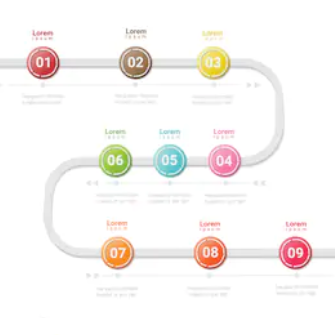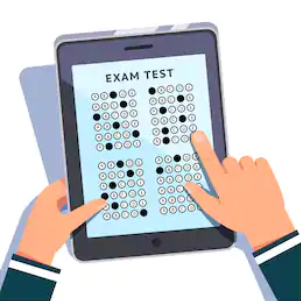FEATURED ARTICLE
About the Spanish Language CLEP* Exam
The Spanish Language CLEP* exam covers what you would learn in two to four semesters of college Spanish language classes, testing both your listening comprehension as well as your reading comprehension and understanding of Spanish grammar concepts. It consists of a total of about 120 questions to be answered in about 90 minutes.
How the Spanish CLEP is Organized
The Spanish Language CLEP exam is different from a typical CLEP exam in that you have three separate sections instead of one big set of exam questions. The first two sections test listening comprehension and the third section tests reading and grammar skills. To see a sample of what the different questions look like, visit the official Collegeboard website.
Section 1: Short Listening (15%)
This section involves short listening questions that are conversational. A typical question is where you hear a person ask a question (e.g. “How are you?”) and then you hear four possible responses. Your job is to choose the response that makes the most sense (e.g. “I am fine.”). This section is the shortest part of the exam, making up 15% of the total number of questions.
TIP: For each question, you have 10 seconds to choose a response once the audio finishes playing. For both sections 1 and 2 of the exam, you will hear the audio prompt only once; there is no option to repeat the audio.
Section 2: Dialogues and Narratives (25%)
The second section involves listening to longer audio prompts, such as dialogues, narratives, and advertisements or announcements. Then instead of choosing an audio response, the question itself is in text format. You will see a multiple-choice question in Spanish testing your understanding of the audio you just heard.
TIP: There is not a time limit per question, but rather an overall time limit of 12 minutes to complete this entire section. The timer is only activated when you are answering the questions, not while the audio is playing.
Section 3: Reading Comprehension (60%)
The final section of the exam involves a variety of multiple-choice questions designed to test your understanding of Spanish grammar and your ability to read and understand longer written passages and dialogues. For many of the questions, knowledge of grammar concepts such as verb conjugation in different tenses, the gender of common nouns, and the use of different types of pronouns will be critical to determining the correct answer.
How the Spanish CLEP is Scored
The Spanish CLEP exam is unique from other CLEP exams in that the number of credits you earn depends on your score. If you get the minimum passing score of 50, that is worth 6 credits. A score of 63 is required to be eligible for the full 9 credits. Of course, as with any other CLEP exam, every college’s policies regarding CLEP are different, so you should verify the score requirements for your particular school with an adviser.
Also, just like for all CLEP exams, there is no way to know exactly how many questions you need to answer correctly to pass the exam. The good news is, every question, no matter what section it is from, is weighted to be worth the same amount. That implies that you do not have to achieve a certain minimum score in any particular section of the exam. You could do very poorly in the second listening comprehension section, for example, and still achieve a solid score as long as you do well on the other two sections.
Studying for the Spanish CLEP (Beginners)
How you study for the Spanish Language CLEP exam is going to depend heavily on your background in Spanish. If you have little to no background experience with Spanish, then you should be prepared to spend at least a couple of months developing your listening and reading comprehension skills before attempting the exam. It takes time to learn the vocabulary and the grammar (which is quite different from English grammar in many respects), but the hardest part to rush is listening comprehension. There are no shortcuts to developing an ear for Spanish, specifically, being able to pick out the individual words in a Spanish dialogue and clearly understand them.
For the reading portion, you will want to pick up a college textbook or find another resource that teaches you Spanish grammar. To develop listening comprehension, you may try out a conversational Spanish course online in addition to immersing yourself in Spanish music, watching your favorite TV shows or movies dubbed in Spanish, and generally, doing everything you can to maximize your exposure to Spanish so that your brain can grow accustomed to the speech patterns and rhythms of the spoken language.
Studying for the Spanish CLEP (Advanced)
If you grew up speaking Spanish or have taken at least a couple of semesters of Spanish in high school, then you may be able to pass the exam with little or no study. In that case, you should take a sample CLEP test to get an idea of where you stand. This will allow you to identify any weak areas for you to work on before attempting the CLEP exam.
TIP: If you are fluent in French or Portuguese, the languages are similar enough to Spanish grammatically that you may be able to pass the Spanish CLEP with minimal study. Take a practice test and see how you do!




